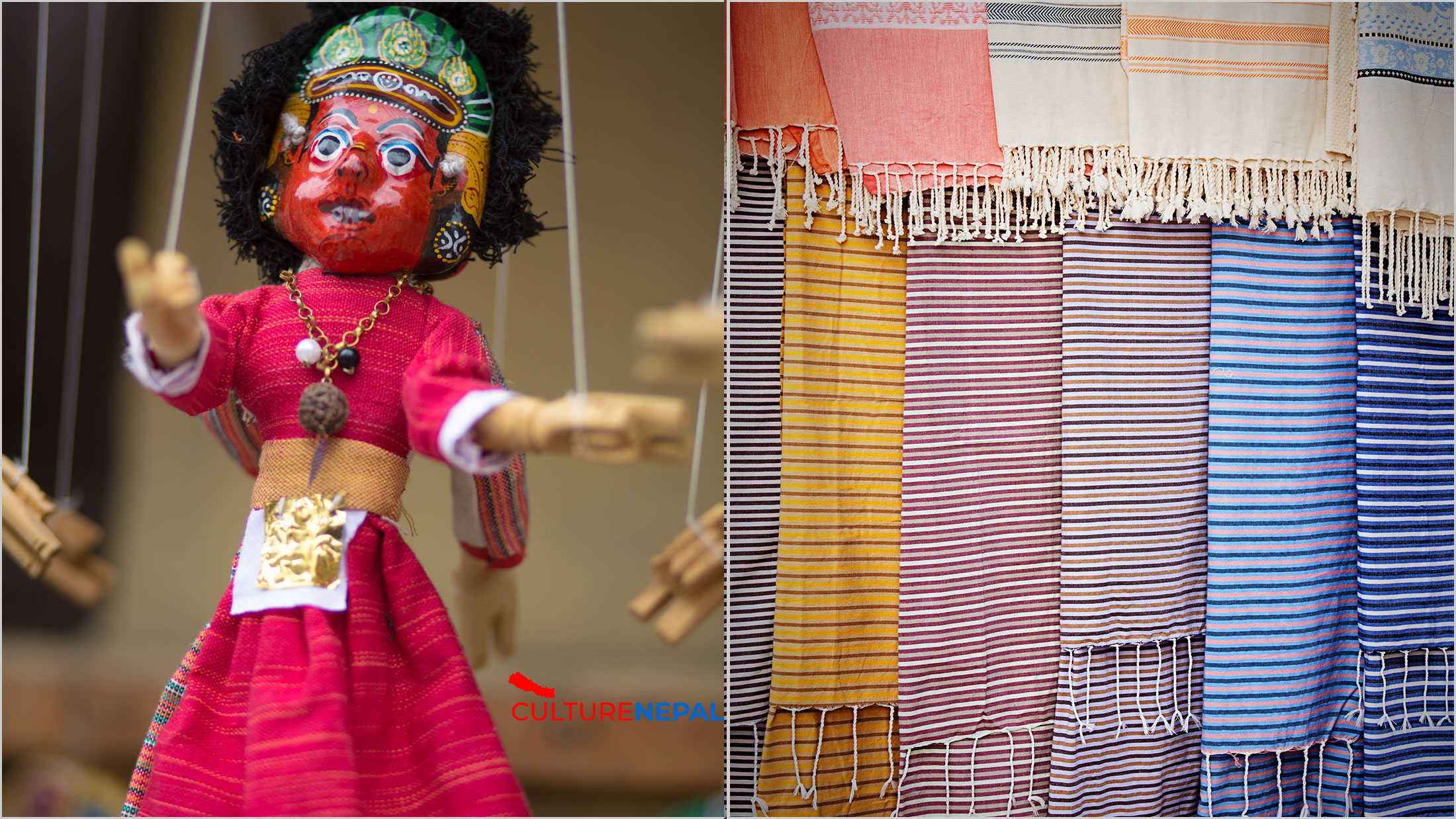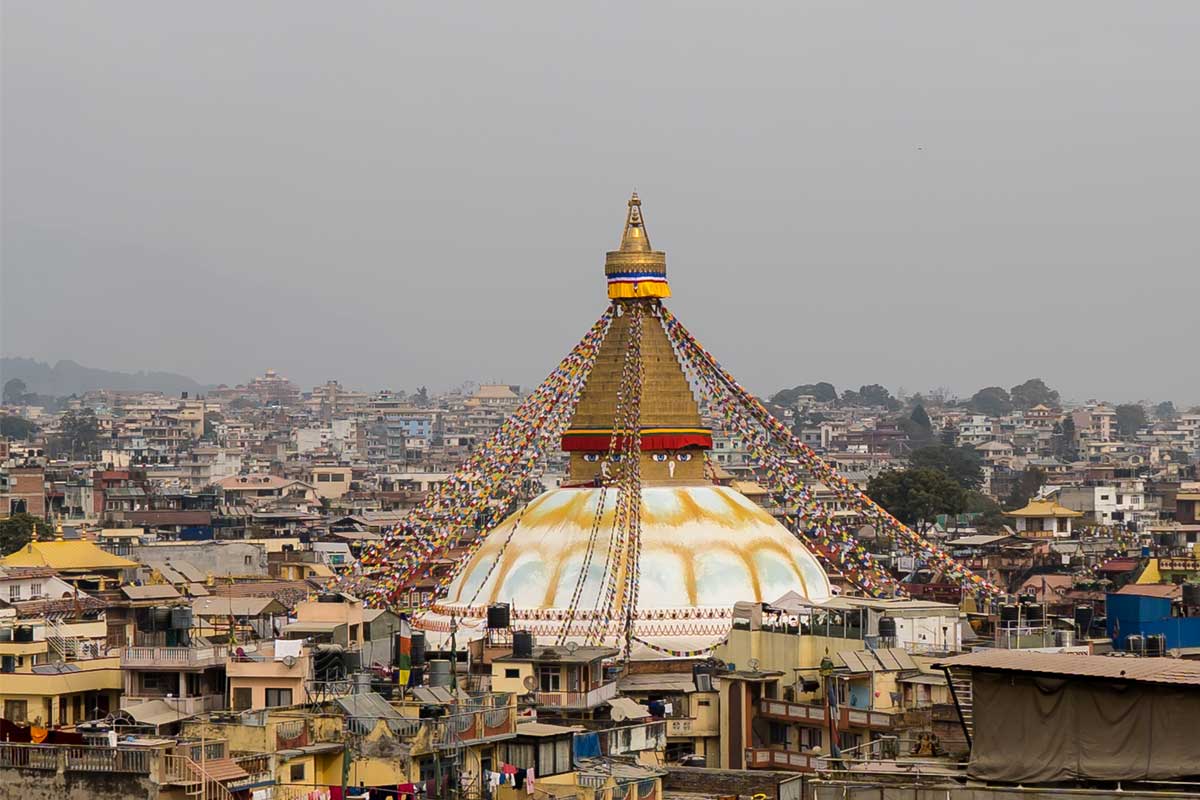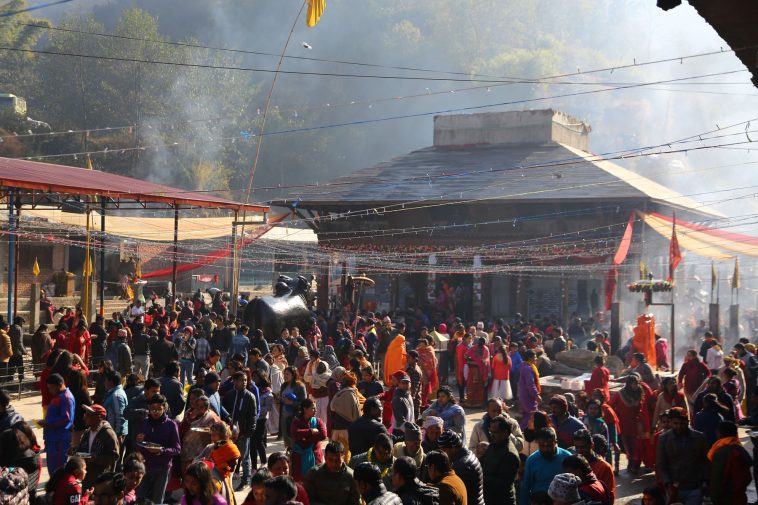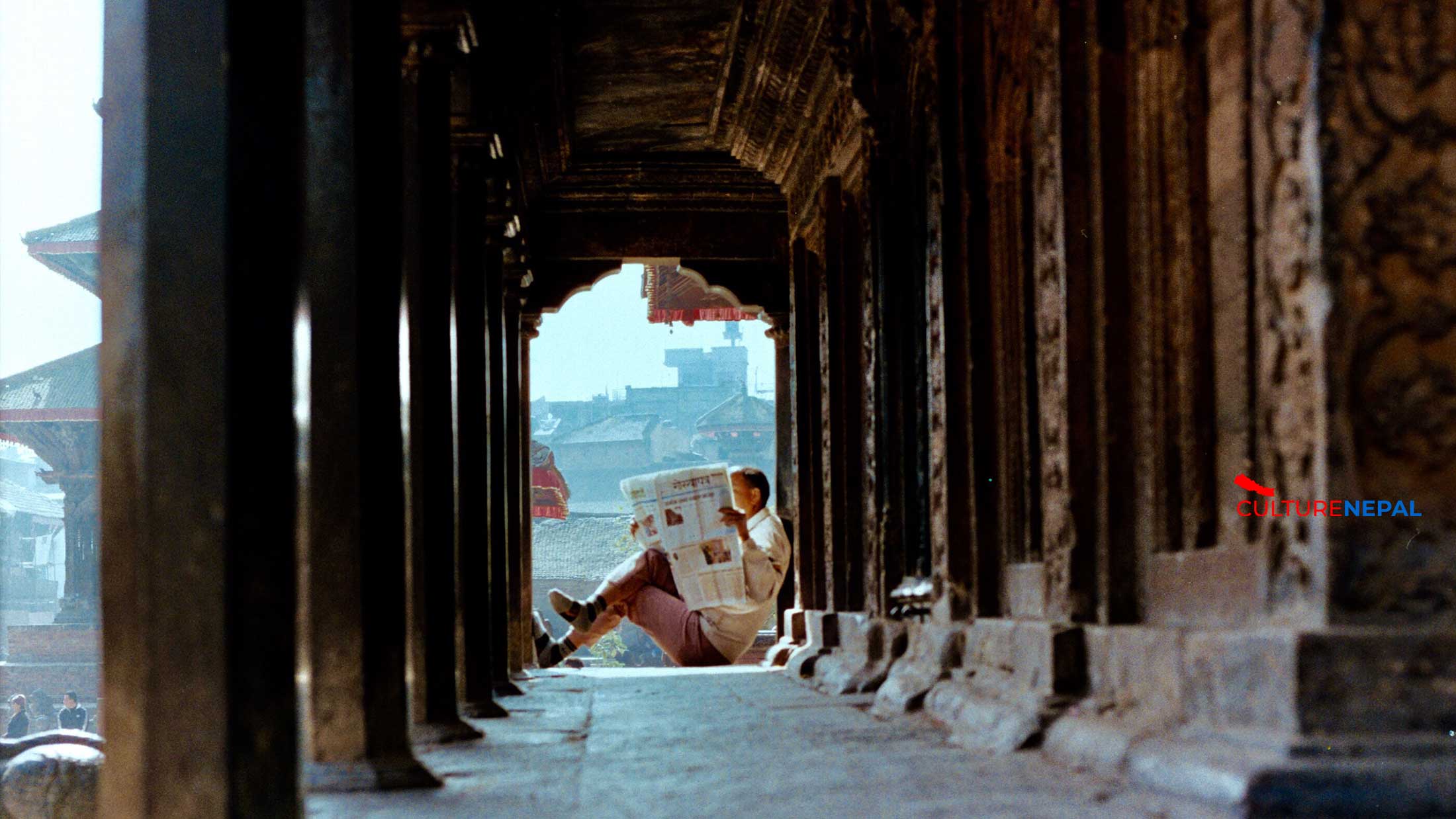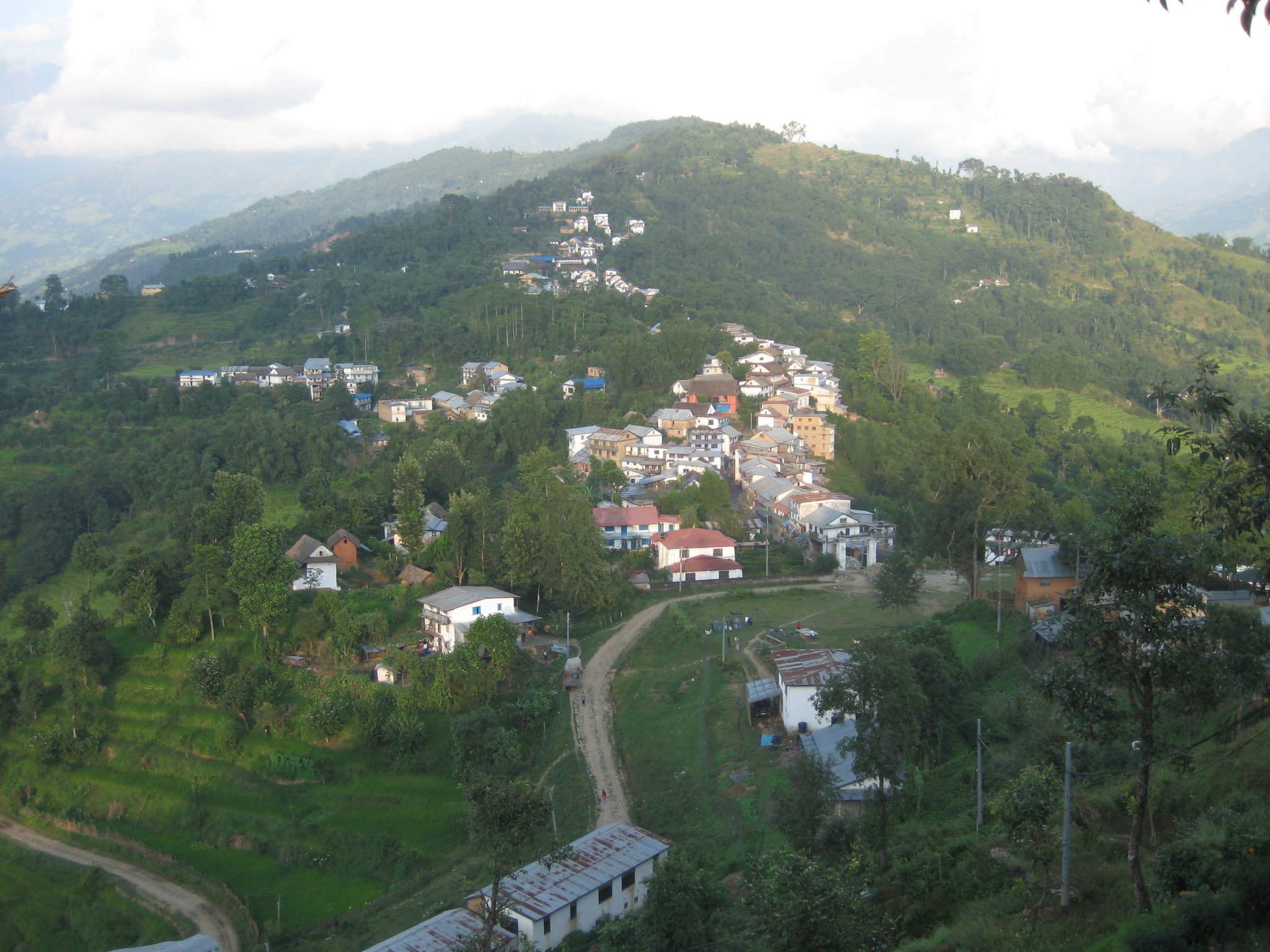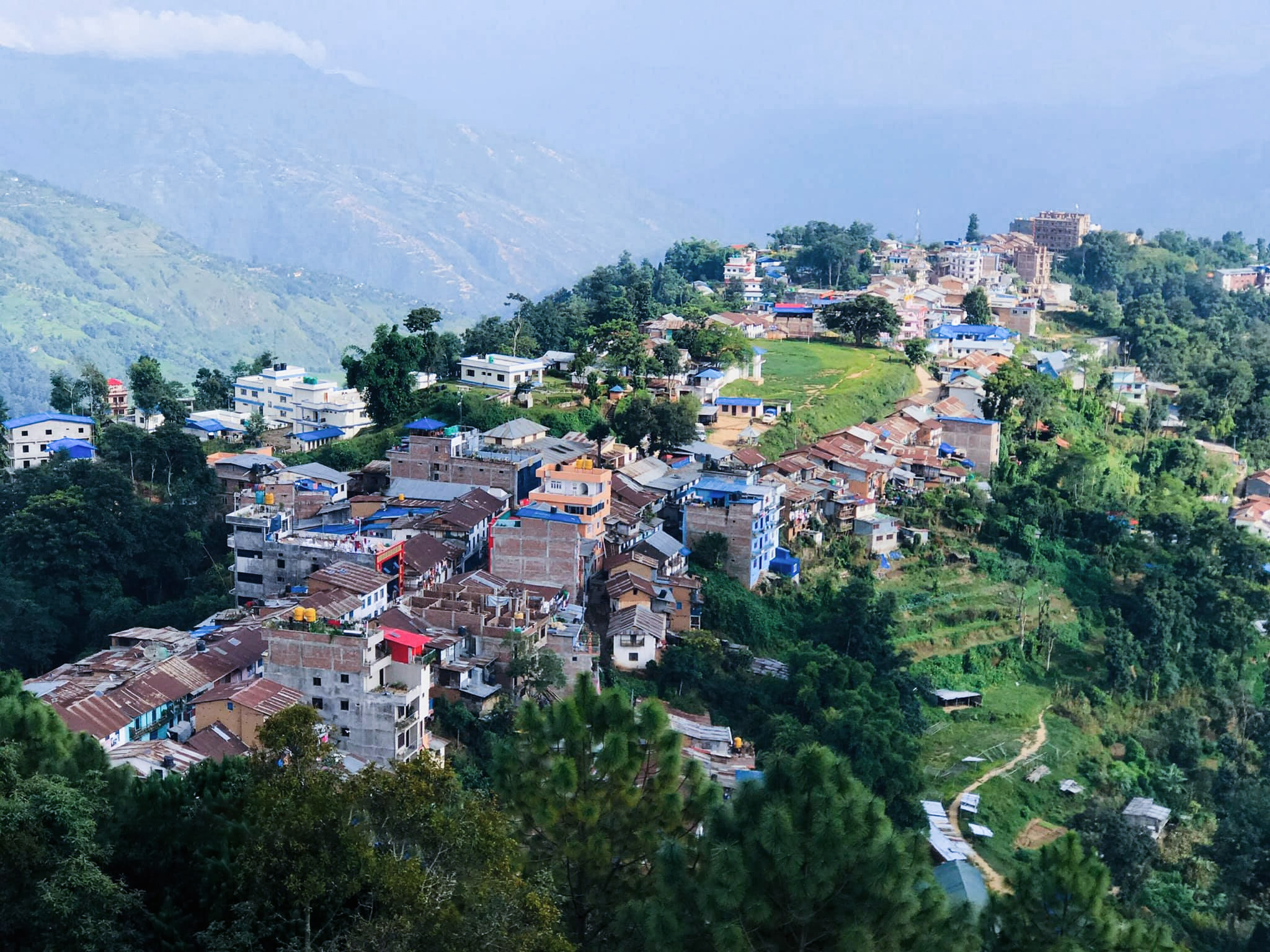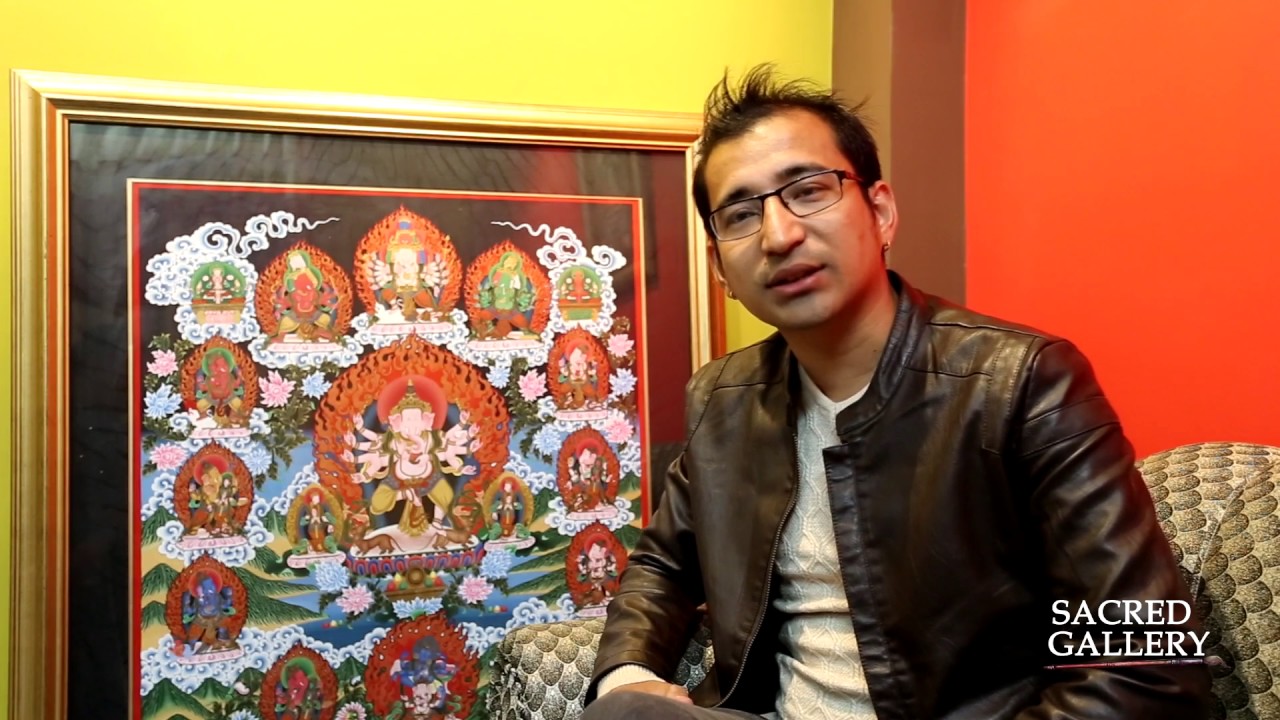After visiting this beautiful Himalayan country, make sure that you return home with a suitcase full of the best souvenirs of Nepal. ⁃ WORDS JADE GAO (GAOXUAN) When you travel to Nepal, special, delicate and colorful objects that you can’t find anywhere else are ubiquitous all around. Kathmandu Durbar Square or Theme’ are amongst the best places to select the souvenirs you want to buy. What five souvenirs would you never regret bringing home? Let’s see.
Thangka
Thangka is a painting that is totally handcrafted, with bnght colors and vivid Buddhist and Hindu deities. Compared to Tibetan thangkas, one shopkeeper told us that while they were all about Buddhism, Nepali thangkas included not only elements of Buddhism, but also Hinduism, which explained why you can find Shiva, Mahakal, and other Hindu deities frequently represented in them. People like to hang thangkas on the walls of temples and houses, for they are not only decorations, but also bless the owners with good luck. Depending on the technique, material, and size, the prices of thangkas can vary. The best thangkas use natural substances as paint, such as gold, silver, agate, malachite, and other precious mineral materials, or the pigment extracted from plants.
Pashmina
Walking into the shop, thousands of colorful pashmina shawls dazzled my eyes and astounded me. Pashmina is widespread in Nepal, but what is pashmina really? It is made from Himalayan mountain goats, and well-known for its incredibly soft and smooth texture. Since it’s light and thin, it won’t look bulky on the wearer. Most importantly, it keeps you warm. At a shop located in Narsingh Chowk, a shopkeeper opened packages of shawls for us and answered our enquiries patiently, even though we didn’t buy anything. He took out a lighter, burned a little part of the pashmina, and let me smell the scent. Burning a small section of pashmina is an effective method for establishing its quality: good pashmina smells like burnt feather, bad or fake pashmina has no smell at all.
Nepali Puppet Dolls
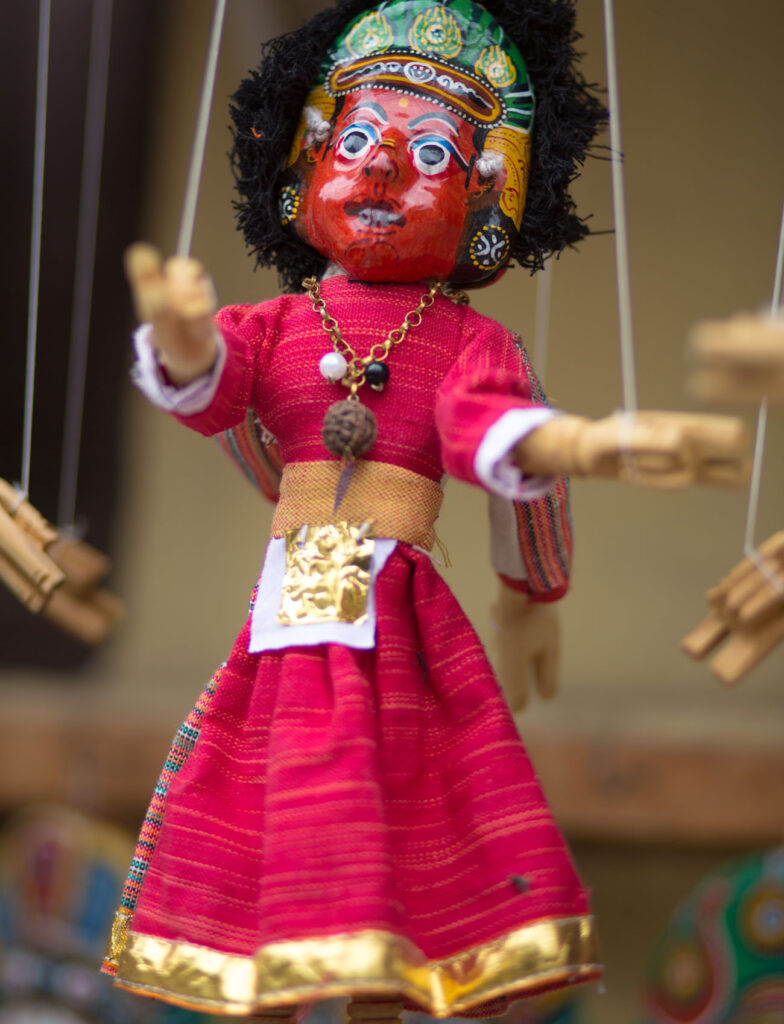
Falling in August or September according to the Nepali calendar, and lasting for eight days every year, Indra Jatra is the most important festival of Kathmandu. Only at that time can we see the Kumari (Living Goddess). Wearing different kinds of masks and costumes, classical dancers gather and dance the Lakhey dance to propitiate Indra, the god of rain. According to the tradition of the festival, Nepali people make portable puppet dolls, with at least four lines tied to the doll’s hands that can be controlled by a puppet master. When shaking the sticks, the doll moves like Lakhey dancers. Some puppet dolls combine two different characters, and some have four different masks. Also, as a living goddess who is worshiped in Nepal, Kumari is a major tourist attraction, and her sacred image is frequently utilized to make dolls; the deities of Bhairav and Ganesh are the next most popular deity dolls after Kumari.
BaghChal (Tiger moving game)
This is a distinctive game in Nepal—so famous that almost every Nepali can play it. There are four tiger pieces and twenty goat pieces in the game. The board layout is easy to draw, and players can play it anywhere accordingly. They have to think out strategies to attack and defend in order to win. It is an intelligent puzzle game, which is appropriate for the young and old, men and women. Buying one for family or friends, it is more than an entertaining game; it can exercise our brain, as well as forge the relationship between people!
Nepali Tea
Nepali people like drinking tea. Tea is to Nepalis as water is to fish. When visiting a Nepali restaurant, a cup of milk tea is a drink worth trying. The milk tea served has masala in it; Nepalis will add special spices into the tea, which exhibits a strong color and subtle aroma after infusion. Himalayan black tea wins most Chinese people’s affection, for its taste is not that strong as CTC tea (crush, tear, curl tea). The tea on sale will be stored in a Shorea wooden box, with beautiful pattern on it.
